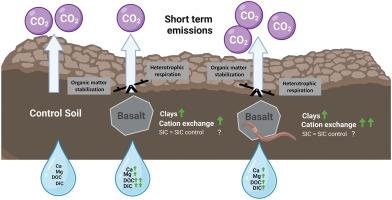
So, how do earthworms contribute to carbon sequestration? It’s all about their burrowing habits and their interactions with soil. As they wriggle through the earth, they create channels that help air and water get into the soil. This not only nourishes the plants above but also helps capture carbon. Let’s dive deeper into how these fascinating creatures play a crucial role in keeping our climate stable and healthy.
What is Carbon Sequestration?
Before we delve into the specifics of earthworms, let’s clarify what we’re talking about when we mention carbon sequestration. In simple terms, carbon sequestration is the process of capturing and storing atmospheric carbon dioxide (CO2). It’s a way to help reduce the amount of carbon in the atmosphere, which is a major contributor to climate change.
There are two main types: **biological** and **geological**. Biological sequestration involves natural processes—like those carried out by plants and soil organisms. Geological sequestration, on the other hand, is a human-made process where CO2 is injected into rock formations underground. While both are important, we’ll focus on the biological aspect today, specifically how earthworms enhance this natural process.
How Earthworms Impact Soil Health
Earthworms are often referred to as “ecosystem engineers.” They transform the soil in significant ways, which in turn affects its ability to sequester carbon. As they move through the soil, they break down organic matter, like dead leaves and roots, turning it into rich humus. This humus not only provides nutrients for plants but also improves the soil structure, making it more capable of retaining water and carbon.
Here’s how it works:
- Increased Nutrient Availability: Earthworms help decompose organic matter, making essential nutrients available to plants.
- Improved Soil Structure: Their burrows create channels that enhance aeration and water infiltration, promoting healthy root growth.
- Enhanced Microbial Activity: The activity of earthworms stimulates beneficial microbes in the soil, which further helps break down organic material and sequester carbon.
With better soil health, plants grow stronger and more robust, which leads to even more effective carbon capture.
Earthworms and Their Carbon Storage Mechanism
You might think of carbon storage as something that happens in a big, complicated machine, but for earthworms, it’s quite simple. When these little invertebrates consume soil and organic matter, they digest it and excrete what’s left behind. This process, known as *casting*, is a vital part of carbon sequestration.
Here’s what happens:
1. **Consumption:** Earthworms eat decaying plants and organic matter, which is rich in carbon.
2. **Digestion:** During digestion, they break it down into smaller particles.
3. **Excretion:** The excreted material, or castings, is nutrient-rich and stable, containing a lot of sequestered carbon.
These *castings* are compact, which means they don’t easily release CO2 back into the atmosphere. So, every time an earthworm digests organic material, it’s essentially locking away carbon, helping to keep our air cleaner.
The Importance of Biodiversity in Soil
When we talk about earthworms, we should also mention the importance of biodiversity in our soils. Different species of earthworms have various roles in carbon sequestration and soil health. For example, some worms prefer to live near the surface, while others dig deeper. This variety means they can affect the soil in different ways.
Let’s explore a few key points about soil biodiversity:
- Diverse Worm Species: More species mean a more resilient ecosystem. Different worms contribute uniquely to the soil’s carbon storage capacity.
- Soil Organisms: Earthworms interact with other soil organisms like fungi and bacteria, amplifying their beneficial effects on carbon sequestration.
- Soil Food Web: A rich variety of organisms helps maintain a balanced food web, ensuring continued nutrient cycling and carbon storage.
In essence, preserving biodiversity is crucial for enhancing carbon storage and ensuring the health of our ecosystems.
Climate Change and Earthworm Habitats
Now, let’s consider how climate change impacts earthworms and their ability to sequester carbon. Changing temperatures and moisture levels can affect earthworm populations and their habitats. For instance, **warmer temperatures** might lead to a decline in some species while benefiting others, disrupting the balance in the soil ecosystem.
What can we do to help?
– **Protect Natural Habitats:** Keeping areas like forests and wetlands intact supports diverse earthworm populations.
– **Sustainable Farming:** Implementing practices like reduced tillage or cover cropping can improve soil health and earthworm numbers.
– **Education and Awareness:** Spreading the word about the importance of these little creatures can foster appreciation and encourage conservation efforts.
By understanding how earthworms are affected by climate change, we can take steps to protect them and the essential role they play in carbon sequestration.
The Future of Earthworms in Carbon Sequestration
Looking ahead, the role of earthworms in combating climate change is more important than ever. Scientists are exploring ways to enhance earthworm populations and their ability to sequester carbon. Techniques like creating earthworm nurseries or promoting biodiversity in agricultural systems could significantly increase their impact on carbon storage.
Here’s the bottom line: Every little action counts. By advocating for soil health and the creatures that help maintain it, we can contribute to a larger solution in the fight against climate change.
In conclusion, earthworms might be small, but their contributions to carbon sequestration are anything but insignificant. They play a vital role in enhancing soil health, locking away carbon, and supporting biodiversity. As we think about ways to combat climate change, let’s not forget these unsung heroes of our ecosystems. By preserving and promoting earthworm populations, we can take meaningful steps toward a healthier planet for future generations.
